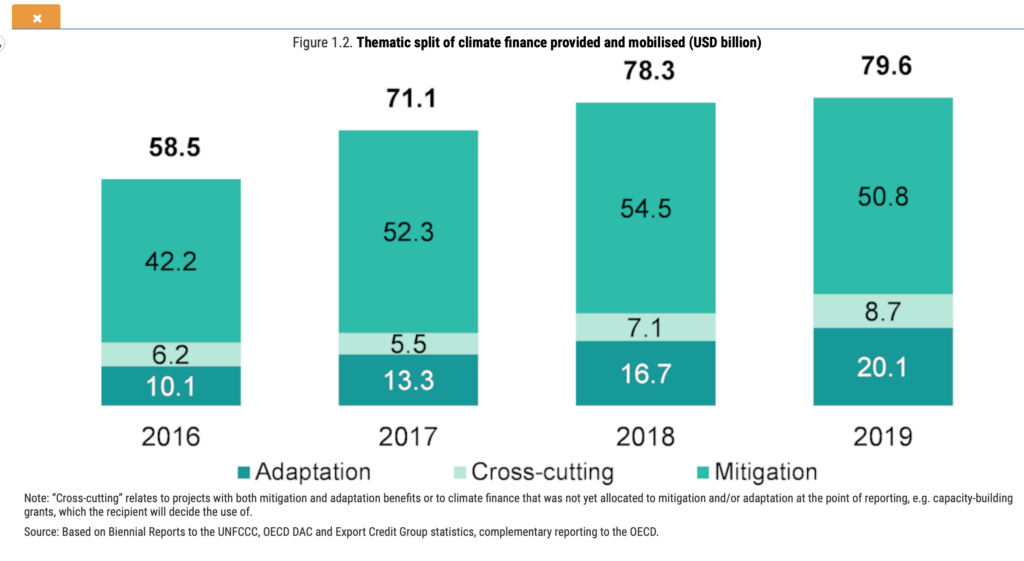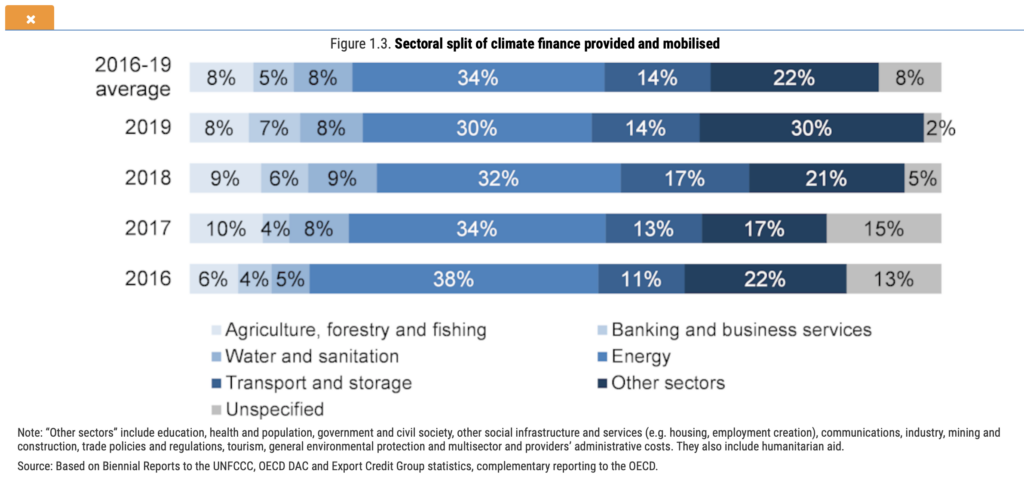We will spend a bit of time in the coming days highlighting charts we think are material as they pertain to the finance aspects of the UN Conference of the Parties (COP-26) taking place in Glasgow. Our starting point for expectations on outcomes for COP-26 is low. There might be a few more reasons for optimism than there were going in to and coming out of the last convening that Sec. Gen. Guterres basically labeled a failure. But, with two linchpins in the global climate machinery – Russia and China – not present, even total agreement by the attending parties amounts to a half measure. More importantly, we do not believe the answer to the climate challenge resides in the hands of nation-states at the governmental level. As can be seen by these charts from the OECD on how many billions of dollars annually are deployed globally to address adaptation and mitigation across sectors, this is the proverbial small-barrel solution to a big-barrel problem. Many estimates rise into the trillions of dollars USD per year that must be mobilized in order to achieve the stated goal of avoiding the 1.5 degree scenario and address the adaptation and mitigation needs for climatological changes that are already established. That can only come from markets and industry, so the best possible action in Glasgow would be for governments to agree to create the conditions for private (and public) enterprise to succeed and thrive in building a better climate future and then get out of the way. [Charts from Climate Finance Provided and Mobilised by Developed Countries: Aggregate Trends Updated with 2019 data, OECD iLibrary]


